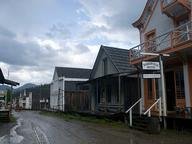Quiz Answer Key and Fun Facts
1. In what area of the USA did the gold rush of 1874 occur? Today the land is called South Dakota. What was it called then?
2. What was the name of the mountain range in South Dakota where the gold rush occurred in 1878?
3. Prior to the gold rush of 1874, the United States had exempted the gold rush area from all white settlement. Which of the following groups of Native Americans were the primary inhabitants of the region?
4. Which of the following artifacts gives credence to the fact that gold was really discovered in South Dakota before the gold rush of 1874?
5. Whose exploration of South Dakota led to the gold rush in 1874?
6. Where was the first hard-rock deposit of gold found in South Dakota during the gold rush of 1874?
7. Which new town in South Dakota was created during the gold rush of 1874? It is perhaps better known for a famous poker game.
8. What type of mining technique was first used by prospectors in the South Dakota gold rush of 1874? They soon discovered that other techniques would be necessary as finding gold would become more difficult.
9. During the gold rush of 1874 prospectors found that the extraction of gold would be a difficult process. Using a method called free milling, what element was mixed with the gold?
10. Most of the miners who flocked to the South Dakota gold rush in 1876 made a fortune in the mining business.
Source: Author
ponycargirl
This quiz was reviewed by FunTrivia editor
gtho4 before going online.
Any errors found in FunTrivia content are routinely corrected through our feedback system.
